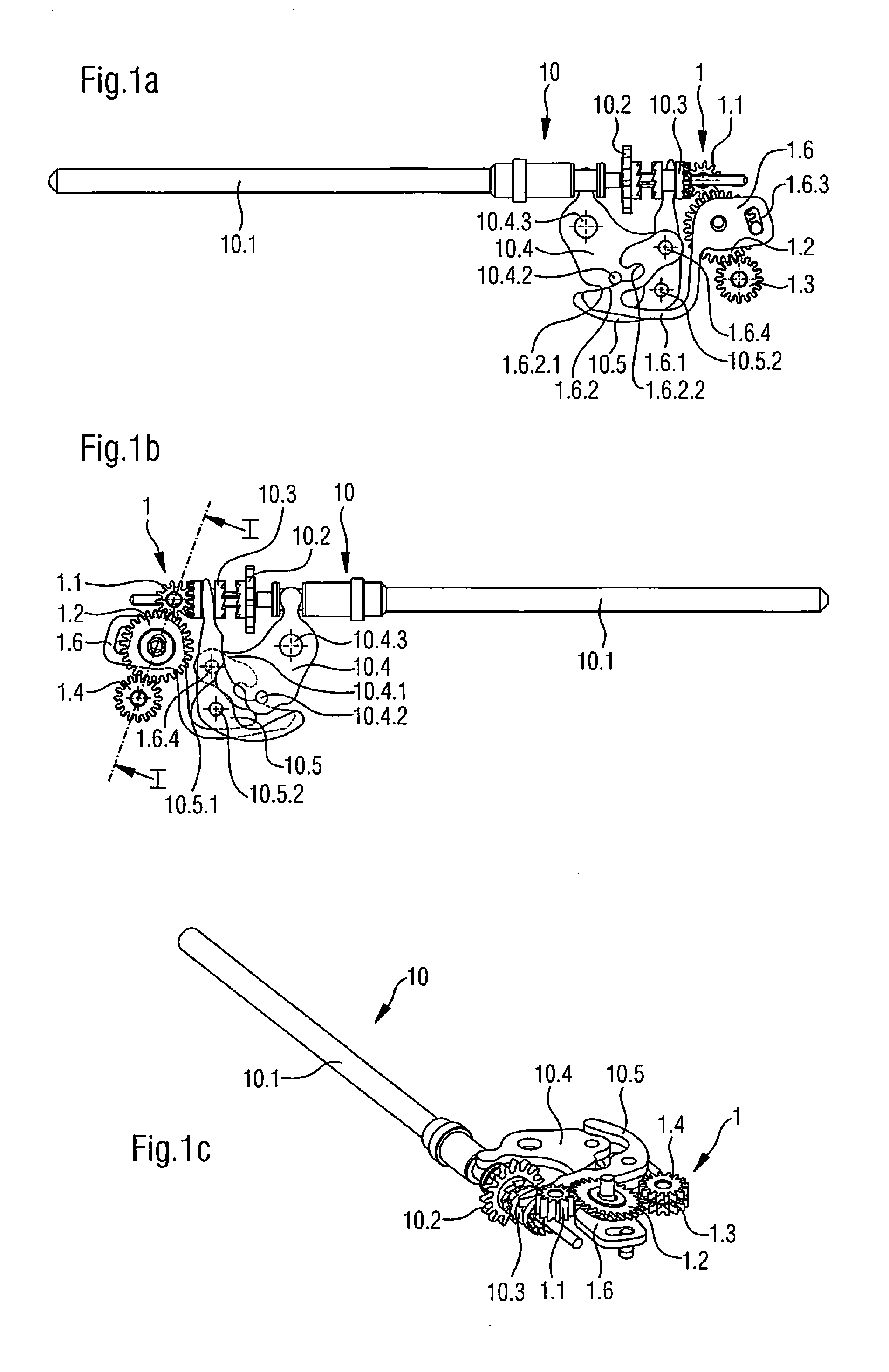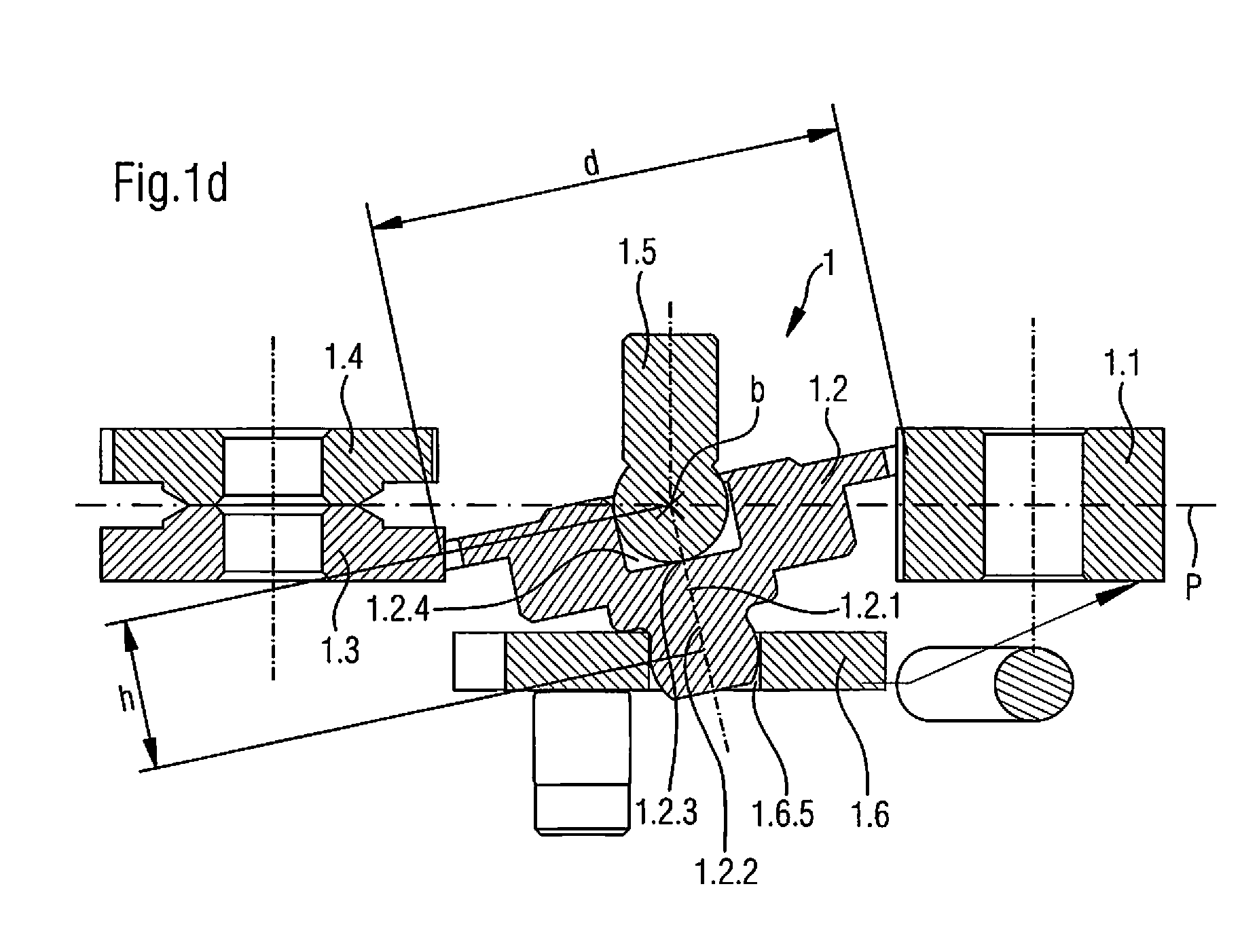Tilting coupling device for timepiece
a coupling device and timepiece technology, applied in the field of timepiece coupling devices, can solve the problems of inconvenient use in extra-flat movements, space occupation, and paralyzed rotation of the corrector wheel, and achieve the effects of reducing bulk, reasonable production cost, and simple and robust structur
- Summary
- Abstract
- Description
- Claims
- Application Information
AI Technical Summary
Benefits of technology
Problems solved by technology
Method used
Image
Examples
second embodiment
[0040]a coupling device according to the present invention, integrated in this case by way of example in a chronograph mechanism, is illustrated schematically in FIGS. 4a to 4d and 5a to 5d, which show a view from above, a view from the side, a perspective view and a longitudinal section of the chronograph mechanism in two different positions, i.e. when the chronograph is activated and when it is stopped. Although the other elements of this second embodiment of the coupling device, apart from a different form or placement without this resulting in a substantial difference, are identical compared with the device according to the first embodiment, the coupling device 1 in this application has only a single exit wheel 1.3. In addition, the movable element also provided in the form of a coupling yoke 1.6 here has a substantially different layout, which, however, does not change the function thereof.
[0041]In fact, the chronograph mechanism comprises a seconds wheel 1.1, which in this app...
PUM
 Login to View More
Login to View More Abstract
Description
Claims
Application Information
 Login to View More
Login to View More - R&D
- Intellectual Property
- Life Sciences
- Materials
- Tech Scout
- Unparalleled Data Quality
- Higher Quality Content
- 60% Fewer Hallucinations
Browse by: Latest US Patents, China's latest patents, Technical Efficacy Thesaurus, Application Domain, Technology Topic, Popular Technical Reports.
© 2025 PatSnap. All rights reserved.Legal|Privacy policy|Modern Slavery Act Transparency Statement|Sitemap|About US| Contact US: help@patsnap.com



